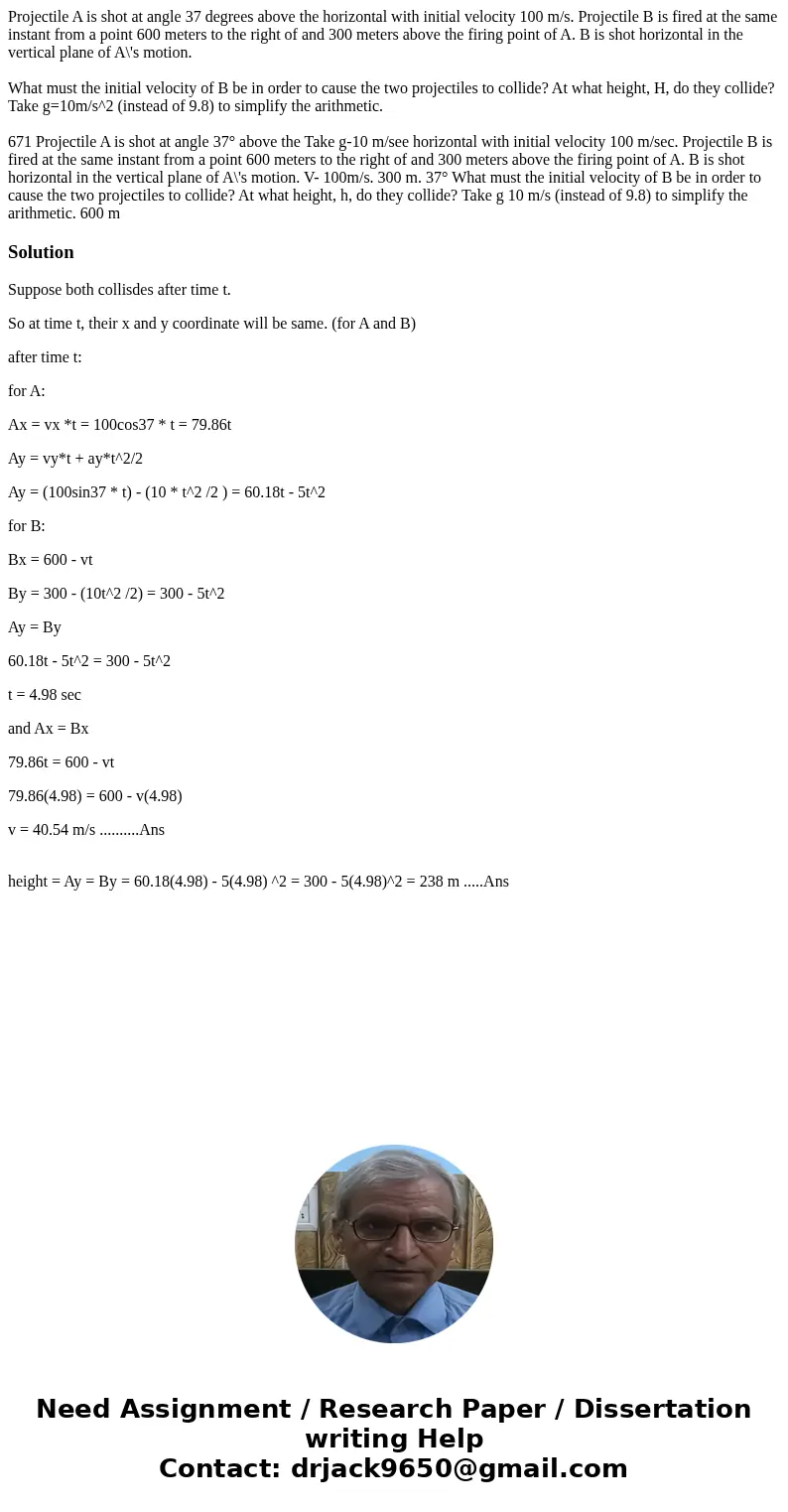Projectile A is shot at angle 37 degrees above the horizonta
Projectile A is shot at angle 37 degrees above the horizontal with initial velocity 100 m/s. Projectile B is fired at the same instant from a point 600 meters to the right of and 300 meters above the firing point of A. B is shot horizontal in the vertical plane of A\'s motion.
What must the initial velocity of B be in order to cause the two projectiles to collide? At what height, H, do they collide? Take g=10m/s^2 (instead of 9.8) to simplify the arithmetic.
Solution
Suppose both collisdes after time t.
So at time t, their x and y coordinate will be same. (for A and B)
after time t:
for A:
Ax = vx *t = 100cos37 * t = 79.86t
Ay = vy*t + ay*t^2/2
Ay = (100sin37 * t) - (10 * t^2 /2 ) = 60.18t - 5t^2
for B:
Bx = 600 - vt
By = 300 - (10t^2 /2) = 300 - 5t^2
Ay = By
60.18t - 5t^2 = 300 - 5t^2
t = 4.98 sec
and Ax = Bx
79.86t = 600 - vt
79.86(4.98) = 600 - v(4.98)
v = 40.54 m/s ..........Ans
height = Ay = By = 60.18(4.98) - 5(4.98) ^2 = 300 - 5(4.98)^2 = 238 m .....Ans

 Homework Sourse
Homework Sourse